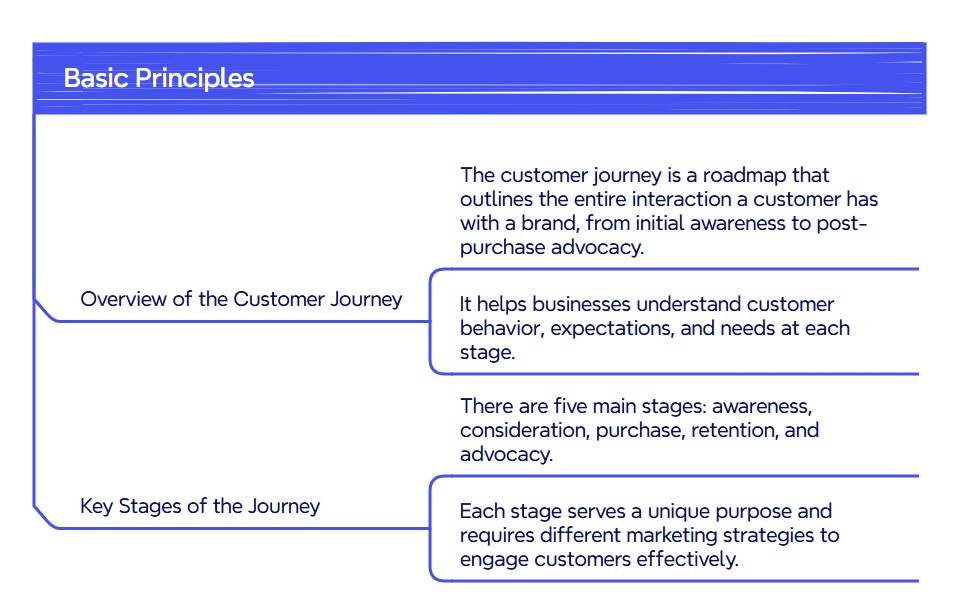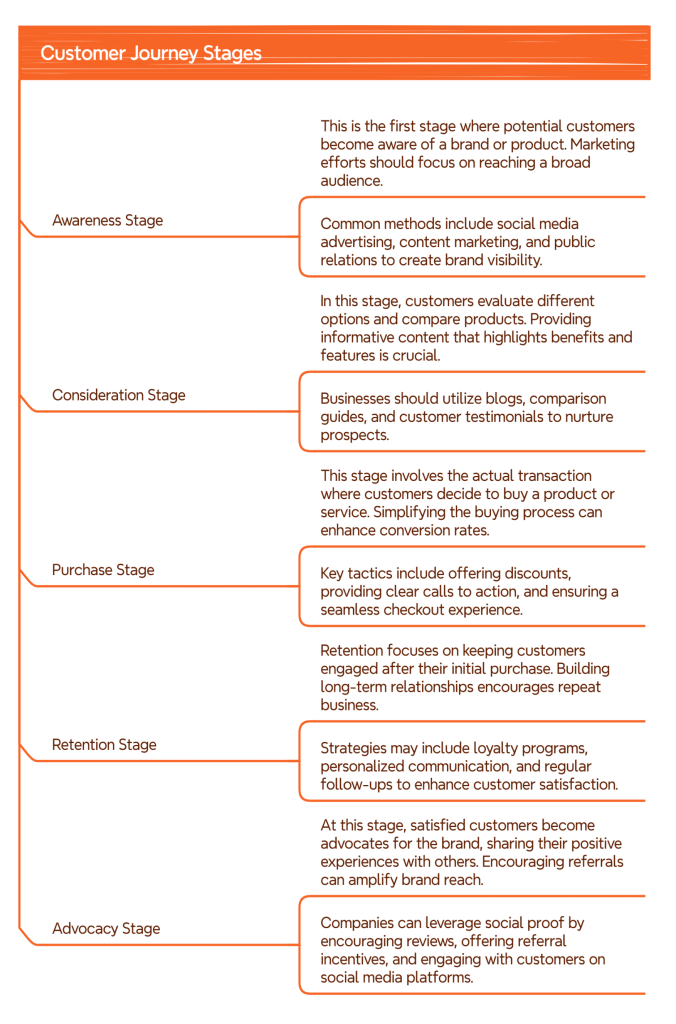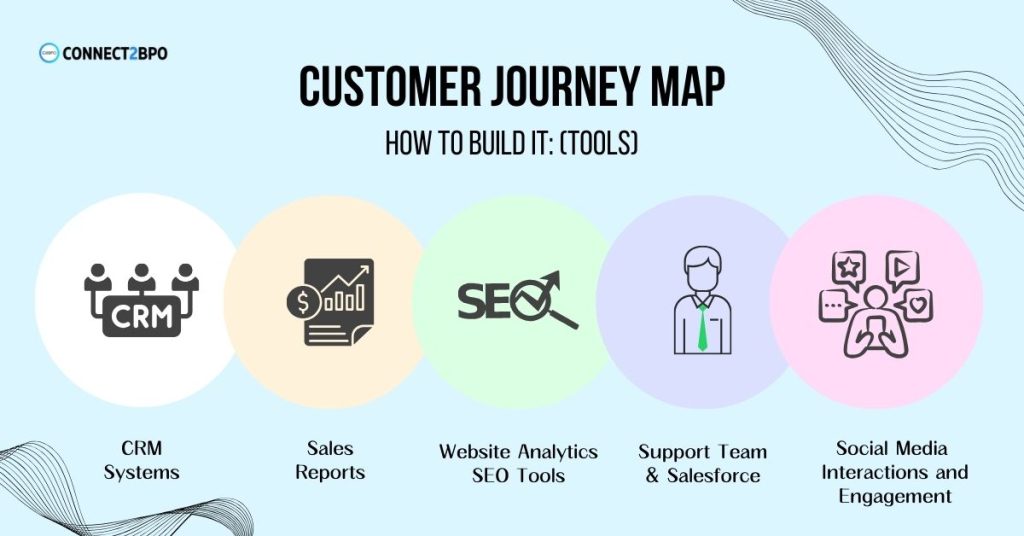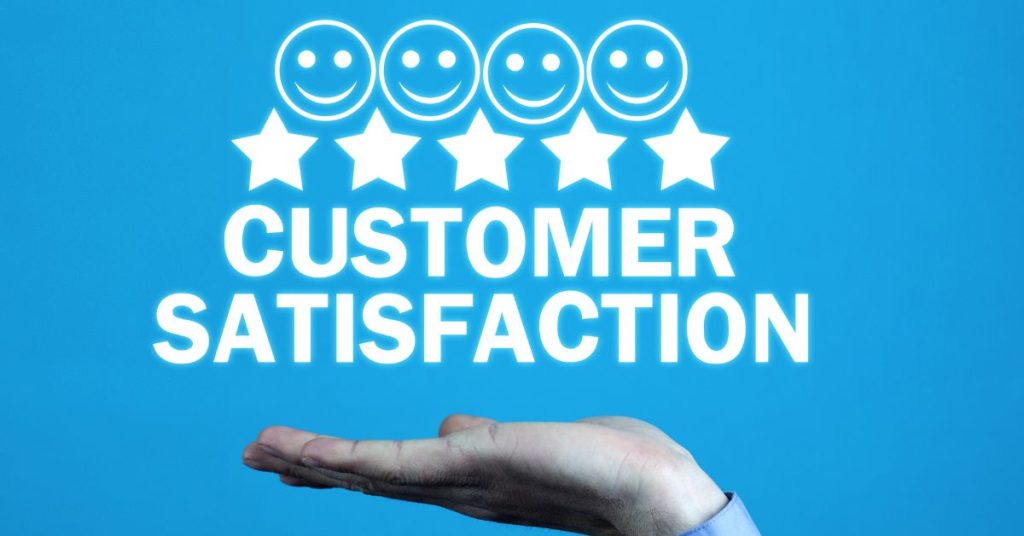The customer experience journey is crucial for businesses engaging with their clients at every interaction point. Companies can identify pain points and enhance overall satisfaction by understanding and mapping this journey. This approach not only helps in retaining customers but also transforms them into loyal advocates for the brand.
Each stage of the journey, from awareness to post-purchase, presents unique opportunities for businesses to connect meaningfully with their clients. Organizations prioritizing the customer experience can adapt their strategies to meet evolving expectations, leading to better outcomes and increased revenue.
Consumers today expect more than just a product; they seek a seamless and enjoyable experience at every stage. Emphasizing the customer experience journey allows brands to build deeper relationships and foster long-term success.
First of all, Let’s Understand the Customer Experience
Customer experience encompasses the various interactions a customer has with a brand throughout their journey.

Defining the Customer Experience Journey
The customer experience journey refers to the complete process a customer undergoes when engaging with a brand. It includes multiple touchpoints, such as marketing, purchasing, and after-sales service. Each touchpoint shapes perceptions and influences satisfaction.
Factors that contribute to the journey include:
Awareness: Initial exposure to the brand.
Consideration: Researching products or services.
Purchase: The transaction process.
Post-Purchase: Support and follow-up experiences.
Understanding this journey is essential for brands. It allows them to identify pain points and opportunities to enhance customer satisfaction and loyalty.
The Evolution of Customer Expectations
Customer expectations have shifted significantly due to advancements in technology and increased access to information. Today’s consumers are more informed and demand personalized experiences.
Key aspects of evolving expectations include:
Speed: Quick resolution of issues and rapid service delivery.
Personalization: Customized offerings based on customer preferences.
Consistency: Seamless experiences across all channels, both online and offline.
Brands must adapt to these changes to remain competitive. Meeting contemporary expectations is critical to fostering strong customer relationships and ensuring long-term success.
What Is the Customer Experience Journey?
The customer experience journey (CX journey) is the complete series of interactions and experiences a customer has with your brand, from the moment they first become aware of the brand to post-purchase engagement and beyond (yes, once a customer knows you, that persona become a real-life advertising of your company). This journey encompasses every touchpoint (both digital and physical) that shapes a customer’s perception, satisfaction, and loyalty.
At its core, the CX journey is not just about individual transactions but about the cumulative emotional and practical experience customers have over time. It is a dynamic, non-linear process where customers navigate stages such as awareness, consideration, purchase, retention, and advocacy. Understanding and optimizing this journey are critical for businesses aiming to deliver consistent, meaningful experiences that foster long-term relationships.
Why the Customer Experience Journey Matters in Business
The customer experience journey is a cornerstone of modern business strategy because it directly impacts key metrics such as customer satisfaction, retention, and revenue growth. (we’re going to talk about customer journey analytics, later)
- Driving Customer Loyalty: A seamless, positive experience at every stage builds trust and loyalty. Research shows that customers are more likely to stay with brands anticipating their needs and reducing friction in their journey.
- Improving Brand Perception: The way customers perceive a brand often hinges on how well their interactions meet or exceed expectations (or if they experienced a nightmare with your team). Positive experiences lead to stronger brand advocacy, while poor experiences can result in customer churn and negative reviews.
- Enhancing Revenue Potential: Happy customers are not only more likely to make repeat purchases but also tend to spend more over time. Businesses with an optimized CX journey often see higher customer lifetime value (CLV).
- Gaining a Competitive Edge: In competitive markets, the experience a brand delivers can be a decisive factor. Offering a well-mapped and exceptional journey helps differentiate a brand from its competitors.
Mapping the Journey
Mapping the customer experience journey involves identifying key interactions and emotions throughout different stages. This process is essential for understanding how customers perceive their interactions with a brand.
Key touchpoints represent significant interactions between the customer and the brand. These can include the first website visit, customer service calls, and in-store experiences.
To effectively identify these touchpoints, businesses can use methods such as customer surveys, feedback forms, and web analytics.
Key Elements of a Customer Experience Journey Map
A customer experience journey map is a strategic tool that visualizes the customer’s interactions with a brand. A well-constructed map provides actionable insights into customer behavior, emotions, and pain points. Key elements of a CX journey map include:
- Customer Personas:
Personas represent specific segments of a brand’s target audience. Each persona is defined by demographics, preferences, motivations, and pain points. Mapping the journey for distinct personas ensures tailored experiences. - Stages of the Journey:
The journey is typically divided into stages—such as awareness, consideration, purchase, retention, and advocacy. Identifying these stages allows businesses to align their strategies with customer expectations at each step. - Touchpoints:
These are the moments where customers interact with the brand, including website visits, social media engagement, in-store experiences, or customer support calls. Mapping touchpoints helps pinpoint where improvements can be made to enhance satisfaction. - Customer Goals and Emotions:
At each stage, customers have specific goals they want to achieve and emotions they experience. Understanding these aspects enables businesses to design interactions that resonate emotionally and practically. - Pain Points:
Highlighting barriers or frustrations customers encounter along the journey is crucial. Addressing these pain points can lead to significant improvements in the overall experience. - Metrics and KPIs:
A robust journey map incorporates measurable data, such as Net Promoter Score (NPS), Customer Satisfaction (CSAT), and conversion rates, to track performance and identify opportunities for optimization.

Read the touchpoints:
Website Interaction: Browsing products or services online.
Social Media Engagement: Likes, shares, and comments on platforms.
Customer Support Contact: Inquiries via phone, live chat, or email.
Mapping these touchpoints helps illuminate potential areas for improvement.
Customer Journey Stages (with real examples)
The customer journey consists of several key stages: awareness, consideration, purchase, retention, and advocacy. Each stage represents a distinct point in the customer’s interaction with the brand.
Awareness Stage: Capturing Attention
In this stage, potential customers first learn about a brand, product, or service. Effective strategies here include targeted advertising, content marketing, and social media engagement to create interest and spark curiosity.
Real Example:
A boutique fitness brand, ActivePulse, uses Instagram ads showcasing real clients achieving fitness milestones. These ads highlight personalized training plans and include eye-catching visuals of the gym environment. As a result, Alex, a young professional interested in fitness, clicks on the ad and visits the brand’s website, intrigued by their focus on community and results. Has this happened to you?
Consideration Stage: Nurturing Interest
Once customers are aware, they evaluate options and seek information to determine if the brand fits their needs. Providing detailed resources such as blogs, webinars, FAQs, and reviews can help guide them.
Real Example:
After discovering ActivePulse, Alex subscribes to their email list for a free guide on “Creating a Fitness Routine That Works.” The email sequence includes testimonials, a free trial offer, and a comparison chart of ActivePulse versus other gyms. Alex is impressed by the brand’s transparent communication and clear value proposition.
Purchase Stage: Delivering a Seamless Buying Process
At this stage, the customer decides to buy. The focus should be on making the transaction as simple and intuitive as possible (the fewer clicks, the better), with options like multiple payment methods, easy navigation, and responsive customer support.
Real Example:
Alex decides to sign up for an online membership. The ActivePulse website offers an intuitive interface, allowing Alex to choose a plan, schedule a first session, and pay via a secure checkout in under five minutes. An immediate confirmation email with session details ensures confidence in the purchase.
Retention Stage: Building Loyalty Through Satisfaction
Retention ensures customers remain satisfied after the purchase by consistently delivering value. This can include personalized follow-ups, loyalty programs, and excellent customer support.
Real Example:
After a week, Alex receives a follow-up email from ActivePulse, asking for feedback on the first session. Additionally, the trainer sends personalized workout tips. Alex also discovers an app where progress can be tracked, along with exclusive access to virtual classes for members. These thoughtful interactions keep Alex engaged and motivated.
Advocacy Stage: Turning Customers Into Brand Ambassadors
Satisfied customers often become advocates, spreading positive word-of-mouth and endorsing the brand. Encouraging reviews, referrals, and social media mentions is key in this stage.
Real Example:
Six months into the program, Alex is thrilled with the progress and shares a before-and-after photo on Instagram, tagging ActivePulse. The brand comments on the post and features Alex’s journey in their next campaign, further strengthening the relationship. Alex’s recommendation inspires two friends to sign up, completing the cycle of advocacy.

Understanding the Stages:
Awareness: Customers become aware of a need or problem.
Consideration: They explore options available in the market.
Purchase: The decision-making process culminates in a transaction.
Retention: Engaging customers post-purchase to foster loyalty.
Advocacy: Satisfied customers may recommend the brand to others.
Understanding these stages enables businesses to tailor marketing strategies to different customer needs.
What’s Included in a Customer Journey Map?
The customer experience journey mapping incorporates key elements that provide actionable insights into behaviors, motivations, and pain points, helping businesses optimize their strategies for better outcomes. Below are the essential components of a customer journey map and how to build each effectively:
1. The Buying Process
The buying process outlines a customer’s step-by-step journey, from initial awareness to post-purchase loyalty and advocacy. It represents the stages of interaction and decision-making, often segmented into stages such as awareness, consideration, purchase, retention, and advocacy.
How to Build It:
- Define the stages of your sales funnel or customer lifecycle.
- Use internal data sources such as CRM systems, analytics tools, and sales reports to map out key touchpoints.
- Cross-reference industry benchmarks and competitor insights to ensure a comprehensive representation.
Sources:
- Website analytics, such as Google Analytics or Google Search Console, as well as SEO tools like SEMrush to track user navigation paths.
- Sales and support team input to identify critical touchpoints, interview your sales force, they are very close to the costumers.
- Marketing campaigns and customer engagement data to analyze where interactions occur, check the analytics from your social media or Google advertisments.
2. Emotions
Mapping emotions allows businesses to understand how customers feel at each stage of their journey. These emotional states often dictate customer behavior and influence their overall perception of the brand.
How to Build It:
- Conduct qualitative research such as interviews and focus groups to gather emotional feedback.
- Identify emotional peaks (positive experiences) and valleys (pain points) using surveys or sentiment analysis tools.
- Incorporate customer quotes and feedback to make the emotional layer relatable and data-driven.
Sources:
- Customer satisfaction surveys (CSAT), Net Promoter Score (NPS), or review platforms.
- Sentiment analysis from social media and support tickets.
- Behavioral data, such as time spent on specific pages or drop-off rates during the buying process.
3. User Actions
User actions refer to the specific steps customers take during their journey, such as researching products, contacting support, or completing a purchase. Understanding these actions is key to identifying friction points or missed opportunities.
How to Build It:
- Map user actions for each stage of the journey using analytics tools, heatmaps, and customer feedback.
- Highlight patterns in behavior to uncover trends that align with business goals.
- Document granular actions such as clicks, searches, form completions, or abandoned carts.
Sources:
- Web analytics tools like Google Analytics for tracking user activity.
- Interaction data from customer service logs or email campaigns.
- UX testing insights to understand how users navigate digital touchpoints.
4. User Research
User research forms the backbone of an accurate journey map by grounding it in real customer experiences. It ensures that the map reflects actual behavior rather than assumptions or stereotypes.
How to Build It:
- Segment customers into personas based on demographics, behavior, and preferences.
- Conduct interviews, surveys, and focus groups to gather qualitative insights.
- Use quantitative data to validate findings and refine personas.
Sources:
- Primary research methods like interviews and focus groups.
- Secondary research from market studies or third-party reports.
- Data from feedback forms, chat transcripts, and social media interactions.
5. Solutions
A critical component of the journey map is identifying actionable solutions to address pain points and improve customer satisfaction. These solutions focus on enhancing positive experiences and resolving friction across touchpoints.
How to Build It:
- Collaborate with cross-functional teams to brainstorm solutions based on identified challenges.
- Prioritize solutions using frameworks like Impact-Effort Matrix to determine feasibility and value.
- Set measurable KPIs to track the success of implemented changes.
Sources:
- Internal brainstorming sessions and team workshops.
- Competitor analysis to identify best practices.
- Feedback loops from customers to validate proposed solutions.
How to Make Customer Journey Chart On Slides
Choose a layout that best represents the flow of the journey. Popular options include:
- Linear Timeline: Best for straightforward journeys with sequential stages.
- Circular or Loop Design: Great for journeys emphasizing cyclical relationships like retention and advocacy.
- Grid or Table: Useful for displaying multiple elements like actions, emotions, and solutions at each stage.
Customer Journey Analytics
Customer journey analytics is all about understanding how customers interact with your brand across different touchpoints. By analyzing this data, businesses can uncover valuable insights to create better experiences, keep customers happy, and build lasting loyalty.
Steps to Implement Customer Journey Analytics
- Define Objectives
Set clear goals, such as reducing churn, increasing conversions, or improving NPS scores. - Integrate Data
Use customer data platforms (CDPs) or analytics tools to unify data from different sources. - Map the Journey
Identify touchpoints and align them with customer goals and pain points. - Use Advanced Analytics
Leverage AI and machine learning for predictive analytics and deeper insights. - Iterate and Optimize
Continuously refine strategies based on new data and trends.
Components of Customer Journey Analytics
Customer journey analytics brings together several crucial elements to help businesses understand and optimize the customer experience.
- Data collection across touchpoints: Involves gathering information from every interaction customers have with the brand. These touchpoints include browsing behavior on a website, opening marketing emails, engaging with social media posts, or even calling customer support. If a customer clicks on a Google ad, visits the website, browses products, and then abandons their cart, leaves a trail of data that reveals both interest and friction points.
- Journey mapping and visualization: Provides a clear picture of how customers move through their interactions with the brand. By using journey mapping software or analytics dashboards, businesses can identify common pathways, such as the steps customers take from discovering a product to making a purchase, and pinpoint where they drop off or encounter difficulties. For instance, if most users abandon their carts at the payment stage, the visualization highlights a problem area that needs attention.
- Behavioral insights: Dives into understanding why customers act the way they do. Metrics like time spent on specific pages, conversion rates, or repeated product searches can indicate customer intent and preferences. If customers frequently browse a category but don’t buy, it might suggest that pricing or product descriptions need adjustments.
- Segmentation and personalization: Play a vital role in tailoring the experience to meet customer needs. Grouping customers based on their demographics, interests, or purchasing behavior allows businesses to create more relevant offers. Wonder if a loyal returning customer might receive exclusive discounts, while a first-time visitor could be shown introductory promotions to nudge them closer to conversion.
- Finally, real-time analytics enables businesses to react instantly to customer behavior, providing opportunities to enhance experiences in the moment. For example, if a customer abandons their shopping cart, an automated email with a discount code can be sent immediately to encourage them to complete the purchase.
How a BPO Company Can Help Improve Your Customer Journey
Business Process Outsourcing (BPO) companies significantly enhance the customer journey by providing expertise and solutions tailored to every stage of the customer experience. One of their primary contributions is improving customer support across various touchpoints. By offering multichannel assistance through phone, email, live chat, social media, and self-service platforms, BPO companies ensure consistent and responsive service. For instance, a well-managed call center can reduce wait times and address customer concerns more efficiently, leading to a better retention stage experience.
Scalability is another key advantage BPO companies bring to the table. They help businesses manage fluctuating customer demand, especially during peak seasons, by scaling resources up or down as needed. During busy periods, such as the holiday season, additional support agents can be deployed to handle increased inquiries, ensuring a seamless purchase experience for customers.
Beyond operational support, BPO providers often assist businesses in mapping and optimizing the customer journey. Their expertise in analyzing touchpoints, identifying pain points, and recommending process improvements helps companies refine their interactions. This comprehensive approach ensures that customers encounter fewer obstacles and a more enjoyable overall experience.
Cost-effective customer engagement is another hallmark of BPO services. By outsourcing routine customer interactions, businesses can reduce operational expenses while maintaining high service quality. The resources saved can then be reinvested into initiatives such as loyalty programs or advocacy campaigns, further enhancing the customer journey.
Retention strategies are also a strength of BPO companies, as they proactively monitor customer behavior and feedback to identify signs of dissatisfaction. Through follow-up calls, satisfaction surveys, or targeted offers, they help businesses retain customers by ensuring their needs are addressed and their loyalty is rewarded.
For businesses operating globally, BPFor businesses operating globally, BPO companies offer multilingual and culturally sensitive customer service, ensuring effective communication and fostering trust among diverse audiences. Additionally, many BPO providers integrate Employer of Record (EOR) services, enabling businesses to hire talent in international markets like Colombia through compliant and efficient global employment solutions. This combination of services bridges language barriers, supports cultural nuances, and simplifies global workforce management. For example, an international travel agency can rely on a BPO provider not only to deliver support to clients in multiple languages but also to manage hiring and employment compliance in Colombia, enhancing both the awareness and retention stages of the customer journey while streamlining their global operations.
Finally, BPO companies collect and analyze customer data in real time, offering actionable insights that drive continuous improvement. By understanding customer behaviors and identifying trends, businesses can make informed decisions to refine their processes. For instance, if data shows frequent product compatibility queries during the consideration stage, companies can update their resources to address these concerns proactively, leading to smoother customer experiences.
In these ways, BPO companies go beyond merely managing tasks—they become strategic partners that help businesses create a seamless, satisfying customer journey that fosters loyalty and long-term success.



